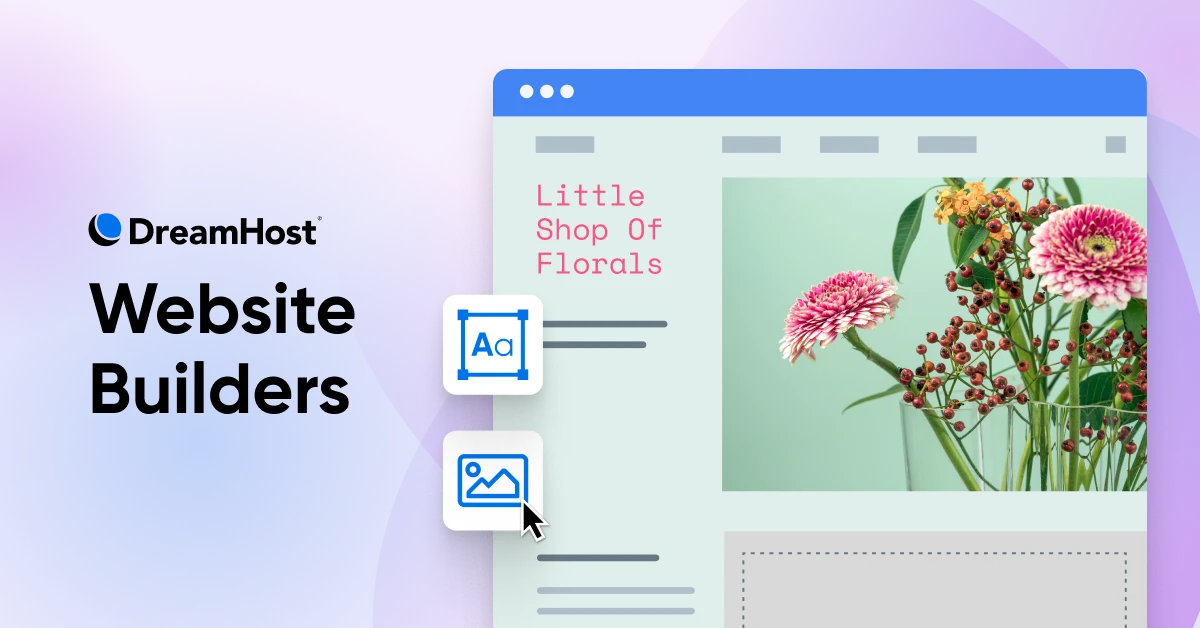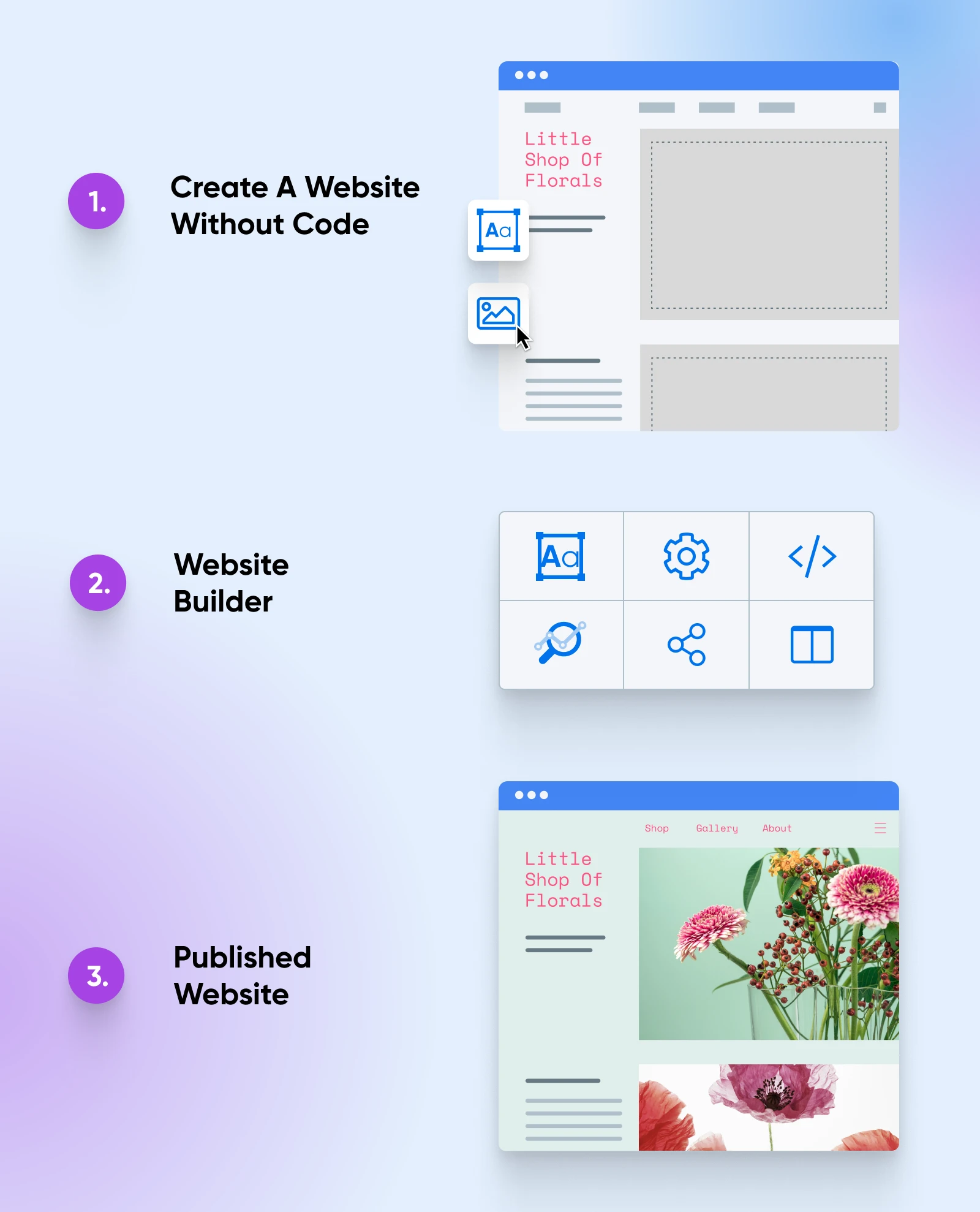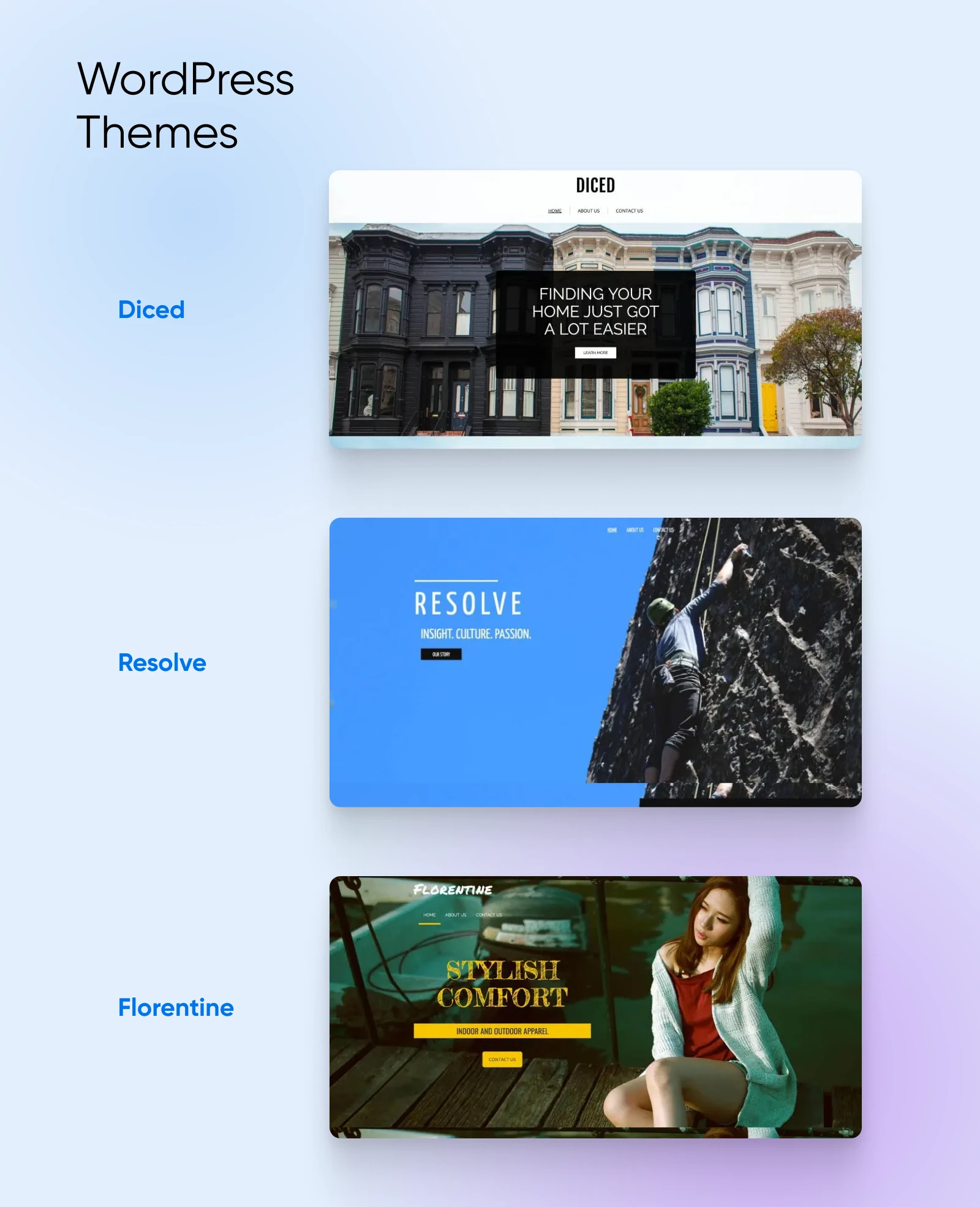The Current State Of Website Builders

If you’ve ever considered building a website, you’re in good company. Current estimates believe there are now around 1.5 billion sites on the World Wide Web.
More interestingly, the number of live websites has grown exponentially. There were only around 900 million in 2016, and that number has nearly doubled in under a decade. What does that mean? Well, it’s getting easier to put content on the web.
Building a website used to be pretty tough. It took a lot of time, and you had to be experienced in different programming languages. While you can still build a site in this old-school, manual way, it’s not the only option anymore. Now, we have website builders.
Website builders are an easy, stress-free way for anyone (yes, anyone) to get a professional-looking website up and running, sometimes in a matter of minutes. In this post, we’re going to take a deep dive into the world of website development, exploring how site builders work, their pros and cons, and what features they need to have. Then, we’ll look at 10 of the top website builders that exist today to help you find the best website builder for your needs.
Ready? Let’s get started.
What Are Website Builders?
Website builders are online tools that enable users to create websites without needing to write code. They often offer drag-and-drop functionality, customizable templates, and various design elements, making it easy for anyone to build a professional-looking website.
Ideal for small business owners and site managers with little to no coding knowledge, website builders streamline the web development process.
How Does A Website Builder Work?
People use website builders to create and manage websites without the need for coding knowledge. They most often accomplish this through an intuitive interface with drag-and-drop features, allowing users to easily add and arrange content elements like text, images, videos, and interactive features. Most website builders also offer pre-designed templates you can customize to fit the user’s brand and style, making it straightforward to create a professional-looking site.

A website builder should help you:
Additionally, they often provide hosting services, meaning the site is live on the internet as soon as it’s published.
Website Builder Categories
Website builders generally fall into two categories: online website builders and offline website builders.
- Online website builders: These builders are web-based, meaning you access them through your internet browser without needing to install any software. They often include hosting services, making them a one-stop solution for creating and maintaining a website.
- Offline website builders: These builders are software programs that you download and install on your computer. You build your website offline and then upload it to a web host. This type usually offers more flexibility and control but requires a separate hosting service.
There are also more specific categories of website builders that can cater to different site-building needs and preferences. These can include:
- E-commerce website builders: Designed specifically for creating online storefronts, these builders include features like product management, shopping cart functionality, payment processing, and inventory tracking.
- Content Management Systems (CMS): While slightly more complex, CMS platforms provide robust tools for managing large amounts of content. They offer extensive customization options through plugins and themes and can be used to build any kind of website, from blogs to business sites.
How Websites Were Built Before Website Builders
Website builders have recently become popular tools for creating websites, especially for small business owners and people with little to no coding experience. By 2030, the global website builder market is expected to grow to $3.8 billion, reflecting the significant impact of the no-code movement on web development. But how difficult was it to build sites before these user-friendly tools became the norm?
Coding A Website From Scratch
Before website builders and Content Management Systems (CMS) like WordPress, building a website meant coding it manually. Potential website owners had two options: hire a developer or learn to code themselves.
Content Management System (CMS)
Content Management System (CMS) is a software or application that provides a user-friendly interface for you to design, create, manage, and publish content.
Read More
To build a website from scratch, you need knowledge of HTML, CSS, and JavaScript. HTML structures the content, CSS adds style, and JavaScript brings the interactive elements. Learning these skills can be challenging for beginners, making website creation a complex and time-consuming process.
Using A Framework
Coding a website from scratch is time-intensive, so designers and developers often use frameworks to speed up the process. CSS frameworks, or front-end frameworks, include pre-written code in folders and files, providing a foundation for website development. This approach eliminates the need to rewrite the same code for new projects.
Some popular frameworks include:
- Bootstrap: A front-end CSS framework that helps developers build responsive and mobile-friendly websites.
- Foundation: A framework with a customizable and responsive grid and features that make rapidly deploying code development easier.
- TailwindCSS: A newer CSS framework that allows rapid development using utility classes, making it easily adaptable to a brand’s design system.
While frameworks accelerate development, they still require a deep understanding of coding languages. In contrast, website builders don’t require coding skills.
Installing Pre-Made Themes
With a CMS like WordPress, you don’t need coding experience to build a website. WordPress is open-source, so developers have created pre-made themes for users to install and customize.

A website theme includes files with all the graphics, style sheets, and coding for your site. Using themes from the WordPress Theme Directory or marketplaces like Theme Forest, you can build a site without hiring a developer or learning complex coding.
However, pre-made themes can have limitations. Even if advertised as customizable, they may not offer all the features you need. Full customization might require editing style sheets or template files.
Using A Visual Editor Or Page Builder Plugin
Before website builders, page builder plugins helped create websites with drag-and-drop editors and visual design tools. The main difference is that page builders design individual pages, while website builders can create an entire site.
Despite the rise of website builders, page builders remain popular. According to the 2022 Web Almanac report, 34% of WordPress users built their sites with a page builder.
Website Builders: The Future Of Web Design
For many years, beginners found it incredibly difficult to create their first websites due to the need for coding knowledge. While pre-made themes and page builder plugins simplified the process, they also had limitations.
Enter website builders. These platforms have become popular because they offer a code-free way to build and customize websites. With some options, users can even employ AI to create a website for them.
As website builders evolve (and AI becomes more robust), we expect to see more advanced site-building “wizards” that automate the development process, allowing site owners to focus on administrative tasks. This technology could also lower the cost of design services, making professional design more accessible and challenging web agencies to remain competitive.
Despite the growing popularity of website builders, CMS platforms like WordPress continue to play a significant role. WordPress powers 43% of all websites, reflecting its steady growth. New features like Full Site Editing (FSE) enable users to create and customize their sites without touching code.
Ultimately, website builders simplify every aspect of website ownership, offering a unified platform for domain registration, hosting, email, and SEO. This comprehensive approach provides beginners with all the tools they need to manage successful websites.
What Are The Pros And Cons Of Website Builders?
Website builders are excellent tools for small businesses looking to establish themselves online quickly and simply. Are they right for you? Let’s look at some of the pros and cons.
Popular Types Of Website Builders
Have you decided that a website builder is right for you? All that’s left now is to choose one. There’s just one problem — You have a lot of choices. Below, we’ve separated some popular choices out into three different types of web builders. Keep reading to learn more about them.
Platforms
As the name would suggest, these are the all-in-one type web builders. Many of them are newer, software-as-a-service (SaaS) solutions with a lot of bells and whistles. Some examples include:
- Squarespace
- Shopify
- Wix
- Hubspot
- Webflow
Plugins
If you don’t want to use an all-in-one platform, you can use a plugin to turn a more complicated, open source CMS (like WordPress) into an easy-to-use website builder. Plugins add new functionality, like drag-and-drop tools, new templates, and other features that can make a platform like WordPress much more beginner friendly. As an added bonus, many plugins are free (or at least offer a free version). Some plugins you might want to check out include:
Web Host Provided Solutions
Platform solutions offer a lot of features, but there’s one they’re missing: built-in web hosting. Web host provided solutions, on the other hand, truly do it all — they offer beginner-friendly website builders, plus hosting plans so you can host your domain in the same place. This makes it easy to build a website entirely from scratch, all with one provider.
DreamHost is part of this category.

If you want to create your own website that’s easy to maintain, DreamHost Website Builder is ideal for a wide range of users, from beginners to advanced developers.
We’re known for our reliable web hosting services, but we also offer an intuitive website builder that simplifies the site creation process. It features a user-friendly drag-and-drop interface, a variety of templates, and extensive customization options. The tool even features a site creation wizard to make things even easier.
Our website builder is integrated directly into our hosting platform, providing a seamless experience for users who need both web hosting and site creation tools. You can even connect a custom domain and we’ll migrate your existing site to our hosting platform for free. With robust security features, unlimited bandwidth, and reliable uptime, we can ensure that your website looks great and performs well. Additionally, we offer excellent customer support and extensive resources to help you get the most out of your website.
Other web host provided solutions include:
- GoDaddy
- Hostinger
- Bluehost
What To Look For In A Website Builder (10 Tips)
With website builders in all shapes and sizes, how do you choose the best one for your needs? Consider these must-have features when evaluating your options.
1. Ease Of Use
Website builders are known for being beginner-friendly, but some are easier to use than others. When choosing a site builder as a novice, it’s best to find one that doesn’t require advanced coding skills to operate.
For example, many users prefer a simple drag-and-drop interface. With a website builder, you can select content modules and drop them anywhere on the page.
There are also click-to-edit website builders, or What-You-See-Is-What-You-Get (WYSIWYG) editors. They enable you to edit the layout and content directly on the page.
WYSIWYG Editor
WYSIWYG is an acronym that stands for ‘what you see is what you get.’ In web design, this typically refers to a web-building interface that allows users to edit that instantly shows the end result.
Read More
These intuitive, real-time interfaces also let you immediately see what the final result will look like once published. Any changes you make are instantly visible in the editor, so you can explore how each edit you make affects the final site.
We recommend looking for a simple, user-friendly interface, regardless of your web design experience. This way, you can skip the learning curve and start building a beautiful website right away.
2. High-Quality Templates
Your audiences can spot a cheap-looking site from a mile away, so it’s important to pick a platform with high-quality templates.
With a clean and attractive layout, you can make a strong first impression. Keep in mind that some platforms display templates directly on the website, so you should preview your template and make sure it displays correctly before launching your site.
3. Frequent, Easy Updates
Building your website is just the first step—once it’s launched, you need to maintain it. One of the most important maintenance tasks is performing frequent updates. Running a site on outdated software makes it vulnerable to bugs and security threats.
If you use WordPress, for example, you’ll need to update your core software, themes, and plugins manually. But most website builders help with this by running automatic updates and around-the-clock monitoring to help protect your site.
In addition to software updates, regularly update your site’s content to keep traffic coming in. Make sure your website builder allows you to easily update posts and pages.
4. Plugins, Integrations, And Marketplaces
Your website probably isn’t the only tech tool your business needs to keep humming along. Look for a platform that integrates with other online tools you use — this will save you time and headaches in the long run.
5. Social Integration
Your audience should be able to connect with you in more ways than one. If your website has social sharing features, you can grow your organic traffic and social media engagement at the same time.
6. Active Community
Engaged communities offer a trove of knowledge, often quicker than a product’s support team may provide. Look for Discord communities or discussion boards around your website builder, and find YouTubers who create content and tutorials around your platform. If you can plug into an active community of engaged users, you’ll have more support when you need it.
7. Domain And Email Options
Along with your web host, you’ll want to own your piece of internet property by securing a domain and branded email address. These elements help you project a more professional image for your business.
You risk losing credibility and authority if you don’t have these elements. For example, if you create a free website with Wix, your URL will look like this: ‘accountname.wixsite.com/siteaddress’. Meanwhile, registering a Top Level Domain (TLD) like .com will look cleaner, which can lead to more click-throughs.
Fortunately, some platforms provide options for domains and email registration. DreamHost includes a free domain even with the cheapest subscription. With a higher plan, you can also access email hosting.
8. Powerful Form Builder
Your visitors will likely need clear ways to contact you — whether they want to submit a complaint, ask questions, or make suggestions. Ensure your website builder has the tools to create responsive, secure, user-friendly forms.
9. Deep Customization Options
After you select a pre-designed template (or create your own), you’ll want to style it. A great website builder should provide the freedom to add personal touches and customization options, such as fonts, text styles, or color schemes.
10. Affordability
As a beginner, you might feel overwhelmed by the costs of creating a new website. Often, the process requires purchasing a web host and domain name. You may even consider hiring a professional developer to amp up your site’s design and functionality.
Luckily, many website builders are cost-effective. Platforms like Wix and Weebly offer great free plans to get your website up and running on a budget.
However, free website builders rarely come with custom domains. This leaves you with a branded URL rather than an owned web space. Plus, when you use a free website builder, it often places ads on your website.
At DreamHost, we created the most cost-effective solution: Our website builder is bundled with a WordPress hosting plan, which includes a free domain. This package is more affordable than many other platforms — our plans start at just $2.95 per month. If you’re a beginner looking to grow your site, this may be the right option for you.
The Future Of Site Builders
In the past, you needed to hire professional developers and designers to create a functioning, user-friendly site. However, website builders are the new future of web design, enabling anyone to have an online presence without much (or any) coding experience.
But what’s the future of site builders? While that remains to be seen, we think they’ll (somehow!) continue to get even better. Want to see for yourself? Build your website today with DreamHost. We make it easy to build and host your website with intuitive, affordable hosting and a website builder that anyone, from beginners to experts, can use.

WordPress Hosting
Unbeatable WordPress Hosting
Reliable, lightning-fast hosting solutions specifically optimized for WordPress.
See More



